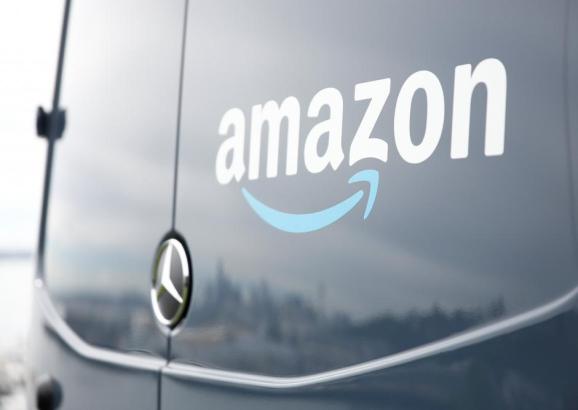
Amazon Plans to Make 50% of Shipments Net Zero Carbon by 2030
February 27, 2019 //
Amazon hopes to make 50 percent of all shipments to customers with net zero carbon in the next 11 years as part of an initiative it’s calling Shipment Zero, it said today. It also announced that it’ll share a report detailing its companywide carbon footprint — along with “related goals and programs” — later this year, and that it’ll continue to use customer feedback to “enable” and “encourage” its supply chain partners to reduce their environmental impact.
The initiative builds on the Seattle retailer’s ongoing work to minimize its contributions to greenhouse gases, Dave Clark, senior vice president of worldwide operations at Amazon, explained in a blog post this morning. Amazon currently has over 200 scientists, engineers, and product designers dedicated to “inventing new ways” to “leverage [its] scale” for the “good of customers and the planet,” he said, and has engaged in an “extensive” project over the past two years to develop a model that provides internal teams with data to help them identify ways to reduce carbon use.
“Customers are always going to want more selection, faster delivery speed, and lower costs,” he added. “We believe that lower costs include lowering the costs to the environment we all live and work in every day.”
Shipment Zero — and Amazon’s broader goal of using 100 percent renewable energy — comes as transportation overtakes power plants as the top producer of carbon dioxide emissions in the U.S. According to the Environmental Protection Agency, medium- and heavy-duty diesel trucks generate close to a quarter of the transportation footprint and emit four times more nitrogen dioxide pollution and 22 times more particulates on average than cars that run on gasoline. Package-carrying planes like those in Amazon Air‘s fleet are also responsible for a sizable share of pollutants — close to 2.5 percent of carbon dioxide emissions worldwide, estimates Manchester Metropolitan University’s Center for Aviation, Transport, and the Environment, a number that’s expected to grow between two to four times by 2050.
Ecommerce actually stands to benefit the environment compared with brick-and-mortar retail, as it turns out, but only if the deliveries are highly optimized. In a 2013 study, Anne Goodchild, director of the University of Washington’s Supply Chain Transportation and Logistics Center, found that grocery delivery trucks emitted between 20 percent and 75 percent less carbon dioxide per customer on average than passenger vehicles if grocery stores could choose drop-off times and optimize routes.
In any case, there’s lots of cardboard to contend with. In 2017, domestic consumption of cardboard materials rose 3.5 percent and 300,000 fewer tons of cardboard were recycled in the U.S. than previous years. But Amazon says it’s making progress on this front — it told BuzzFeed last year that its Frustration-Free Packaging Program, which encourages merchants to use 100 percent recyclable packaging, has reduced packaging waste by 16 percent and “avoided 305 million shipping boxes in 2017 alone.”
“With improvements in electric vehicles, aviation biofuels, reusable packaging, and renewable energy, for the first time we can now see a path to net zero carbon delivery of shipments to customers,” Clark wrote. “[I]t won’t be easy to achieve this goal, but it’s worth being focused and stubborn on this vision and we’re committed to seeing it through.”